
Fear of drought. Worry over forest fires and flash floods. Concern over rapidly rising temperatures.
Fretting about climate disasters that are beyond our control, to the likes we don’t even dare imagine lest they really come true.
It’s easy to get worked up when thinking about climate change, whether you believe in it or not. Eco-anxiety or denial, or somewhere in between, it is your emotion to choose. Whatever the case may be, reaction is necessary.
Yet, this isn’t an argument for the sake of quarreling online. It’s not about who is right and who is wrong. What it is, however, is about our future sustainable life on Earth.
The world needs you to plant more trees, plain and simple.
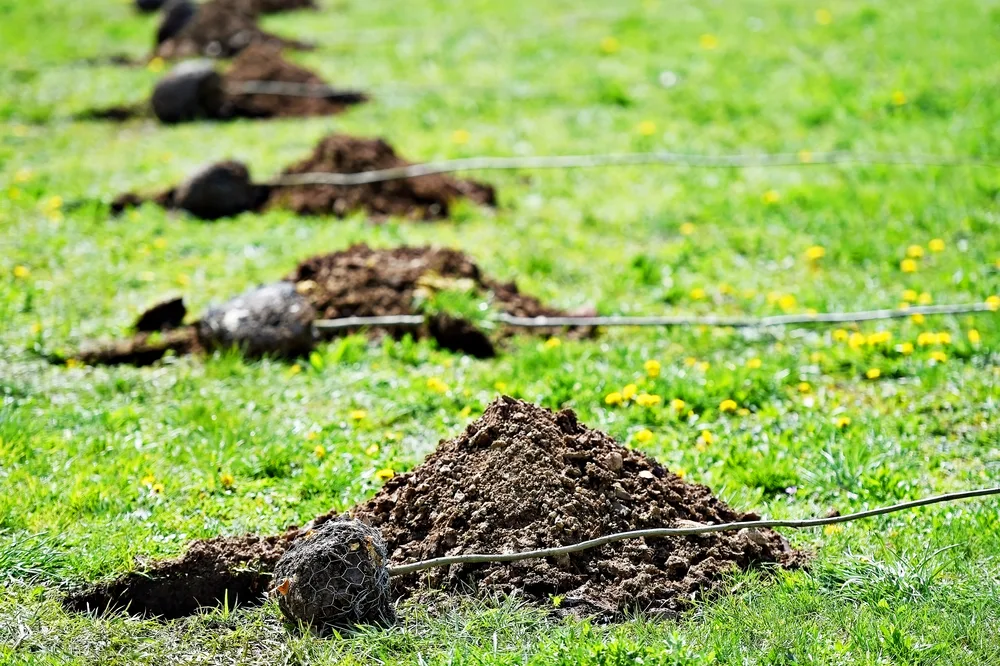
So, go ahead and ask yourself: how many trees have I planted in my lifetime?
Does it feel like a big enough number? Or am I counting on other people to do it for me?
Wouldn’t it feel wonderful to plant at least a few ornamental or fruit trees in my backyard for future children/grandchildren to enjoy?
Sit down and meditate on it for a while, or write your feelings down in a journal – why does the world need more trees and what can I do to help?
A World with Fewer and Fewer Trees
We can all agree that the climate is changing. It’s hotter than ever before in some places of the world, while it is colder in others.
The recent years have been stormier, wetter, drier, you name the extreme condition, you’ll find it in the weather forecast.
Blame it on deforestation, fires, oil extraction, garbage in the ocean, too much plastic, overconsumption, cows, pigs, grains, bad farming practices or an excess of refined goods. There’s always somewhere to point a finger.
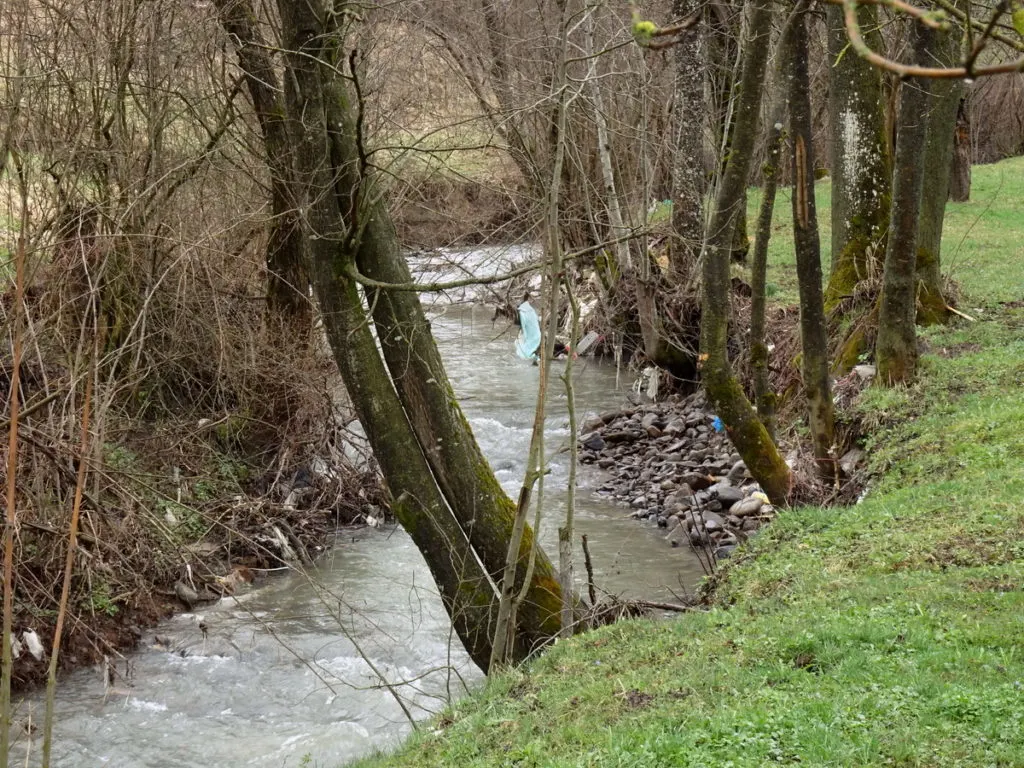
The truth is, what comes around, goes around.
Meaning that your backyard has an effect somewhere else on the planet. However small, there is an energy exchange.
The Amazon rainforest (more than two million square miles of it) used to be revered for its importance in regulating the world’s essential oxygen and carbon cycles. Now it’s becoming more of a threat, with parts of the Amazon releasing more carbon than they can absorb. That’s bad news for you, for me and for all creatures on earth.
Let’s not even mention the wildfires in California, Australia and Canada. Or the flooding in Europe or Bangladesh.
Everywhere you look, it seems that climate change is hitting closer to home. By now, most of us know someone who has been affected by a changing climate, if it hasn’t happened to us personally.
Let’s examine the grounds for loving trees.
11 Reasons to Plant More Trees in Your Garden
Once you know why you need more trees in your life, and in your garden, the “how” will automatically come. Just like with manifesting, you need to feel the reason behind wanting to plant more trees.
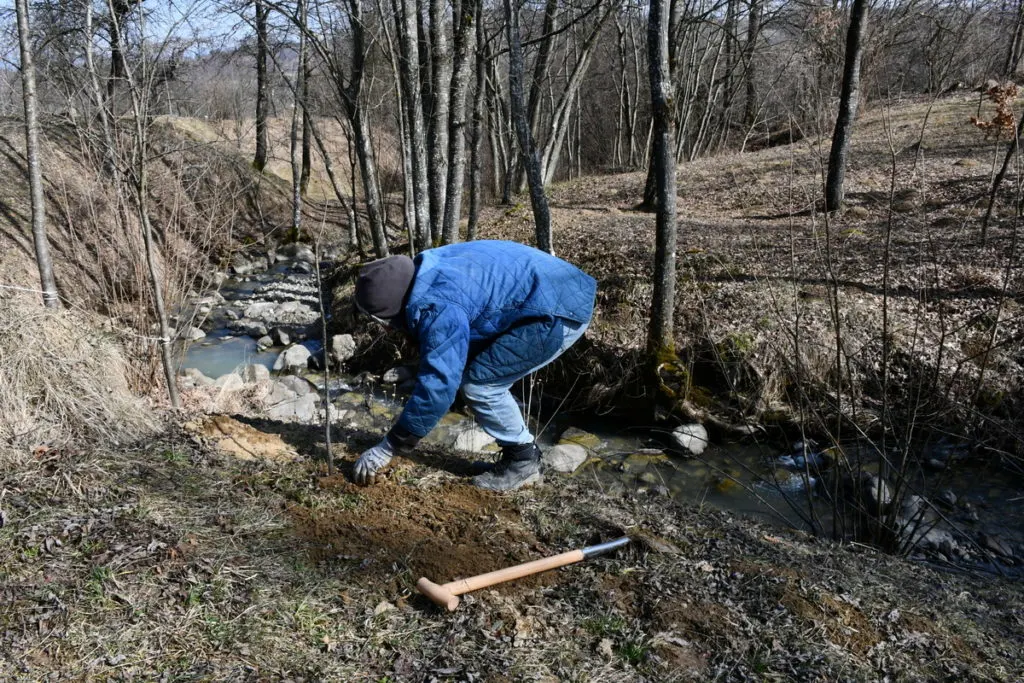
Plant one and several more will follow. Perhaps you can squeeze some more shrubs, bushes or small trees into a hedgerow. Or you can go all out with a multi-fruit backyard orchard.
A single tree is an added benefit to the world too. Plant what works for you in your growing hardiness zone and private space.
1. Diversity in Tree Species
Trees are truly incredible! They can grow to maturity and die within your lifetime, or they can live on for hundreds and thousands of years.
Regardless of how long they are around, what’s important to know is that there are so many native species to choose from. To find out what is native to your area, do some research, then pick a suitable book for identifying trees in your region.
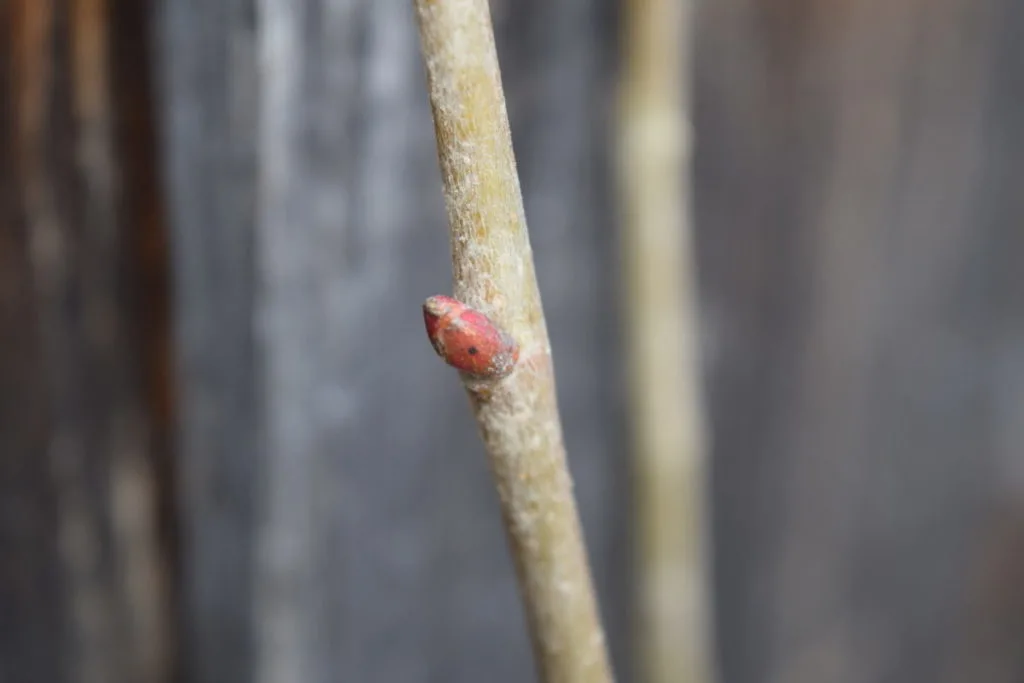
You might think about planting the following trees in your garden:
- oaks
- maples
- ashes
- birches
- willows
- redbuds
- serviceberries
- dogwoods
- cedars
It’s not enough to focus on how much carbon a tree can absorb. The result will always vary, based on the age, health and species of the tree.
When choosing a tree, or trees, for your garden and backyard, look at several factors. Such as, what wildlife would you like to attract, how tall/wide does it grow, will it make deep or dappled shade.
There’s more than one good tree for every situation. The only wrong way to do it, is to plant none.
2. Plant Trees to Promote Rewilding
It’s one thing to plant trees for us, to fulfill our needs. But, what about the birds, small mammals and insects that also need shelter and food?
Backyard trees can cater to them as well – and very well indeed.
In fact, adding trees and shrubs is one of the ten steps you can take to rewild your garden. Trees can attract songbirds, charismatic owls, bats and squirrels, along with other ground-dwelling creatures.
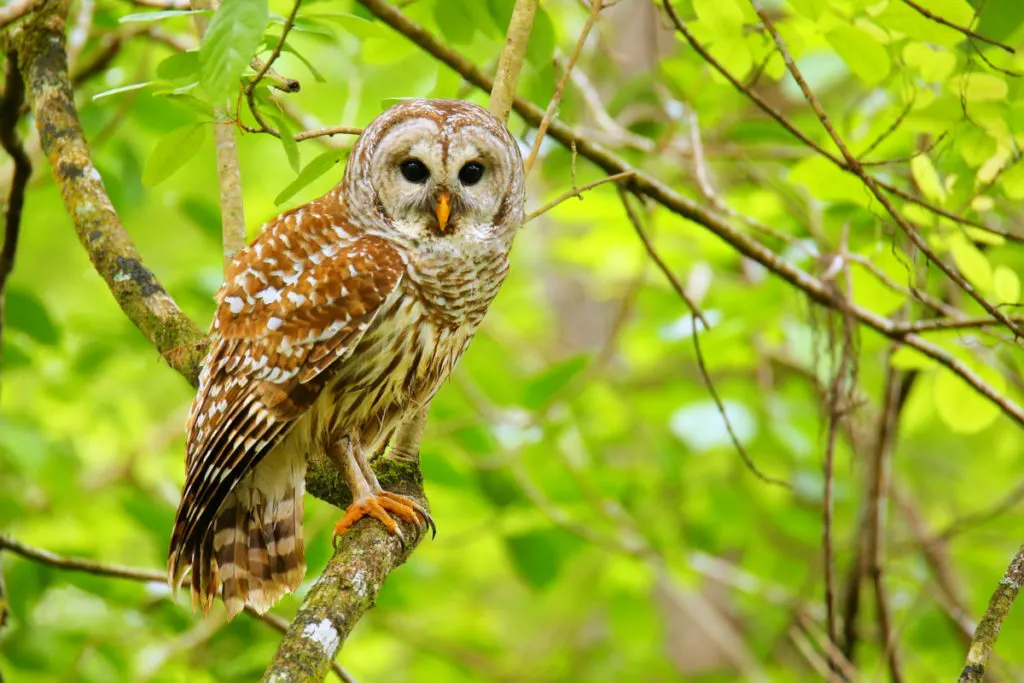
Provide them with a water feature hidden in the trees and your garden will be a haven for wildlife. The best kept secret on the block, at least for the non-humans.
Related reading: 15 Colorful Trees & Shrubs to Attract Stunning Birds To Your Backyard
3. Trees Provide Shade – Perhaps the Best Reason To Plant More Trees
We all know that trees provide shade in the heat of summer, we’ve experienced this firsthand. When you’ve had enough sun, you automatically walk down the tree-lined street instead. Or after a long day of working in the garden, you sit under a tree with a lemonade and bask in the coolness of the canopy.
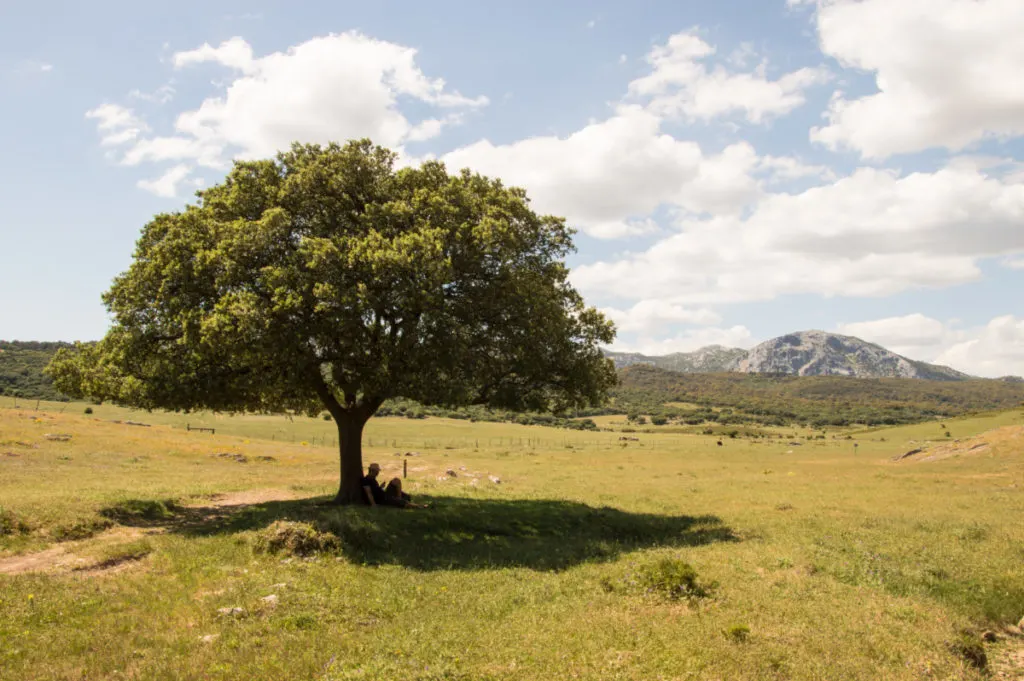
Trees can reduce the localized temperature by several degrees.
They do this by providing shade (slowing heat absorption) and through transpiration cooling. You don’t even need a thermometer to feel the change of up to 10 degrees Fahrenheit or about 5 degrees Celsius.
Trees are a natural air conditioner and can also help you decrease your electric bill as they help to cool the air around your home without AC.
The right trees, planted in the right area, can also help to reduce your winter heating needs as they block the wind.
Consider the fact that they can increase the value of your property, which we’ll get to in a moment, and the planting of more trees in your garden is beginning to sound like a win-win proposal.
4. Food Forests – Trees as a Source of Food
There is no place I’d rather be than foraging in a forest garden.
You’ll find herbs, flowers, bark, fruits, vegetables and more.
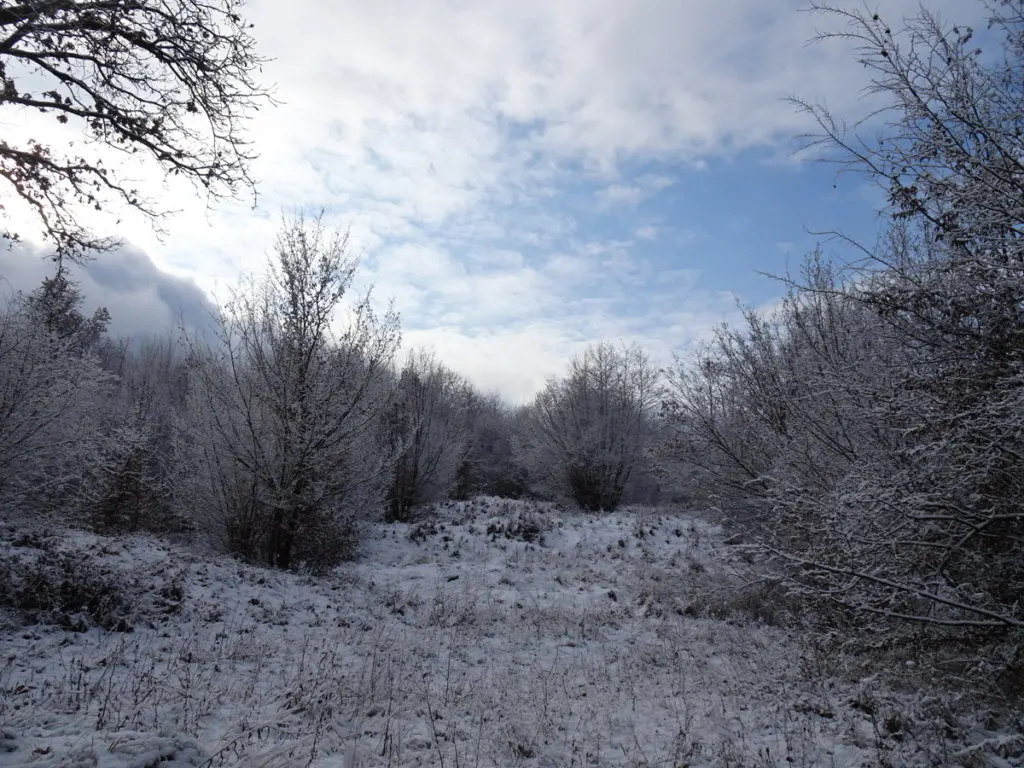
Forest gardens (or food forests) have several benefits:
- they promote biodiversity
- work with the land, rather than against it
- tough, adaptable and flexible when it comes to a changing climate
- offer a wide range of harvestable products from food to fiber and firewood
- help to restore habitats, which also promotes rewilding
- forest gardens are beautiful places to rest and relax in, think forest bathing
Sure, a forest garden will challenge your ideas about what is edible – as it isn’t your regular backyard garden. But, it will provide you with a generous amount of food to eat from a small space; foods other than tomatoes, peppers and carrots.
If you’re up for the challenge, read all you can about it. Check out our interview with Robert Guyton about his forest garden. Go and visit some food forests in your area as well, if there are any. Maybe you’ll be the first to visit or to create one.
Read more about turning your backyard space into a food forest from Chelsea Green Publishing: Designing a Forest Garden: The Seven-Layer Garden
5. Trees Help to Clean the Air
Air quality differs greatly from cities to the countryside, though you’ll almost always find the air of the forest the most refreshing and replenishing.
If you haven’t experienced this yet, go on a long hike into the wilderness, or even just sit in a park for a few hours and feel how much easier it is to breathe. Wonderful, isn’t it?
Trees help to clean the air by removing pollutants such as carbon dioxide, nitrogen dioxide and particulate matter.
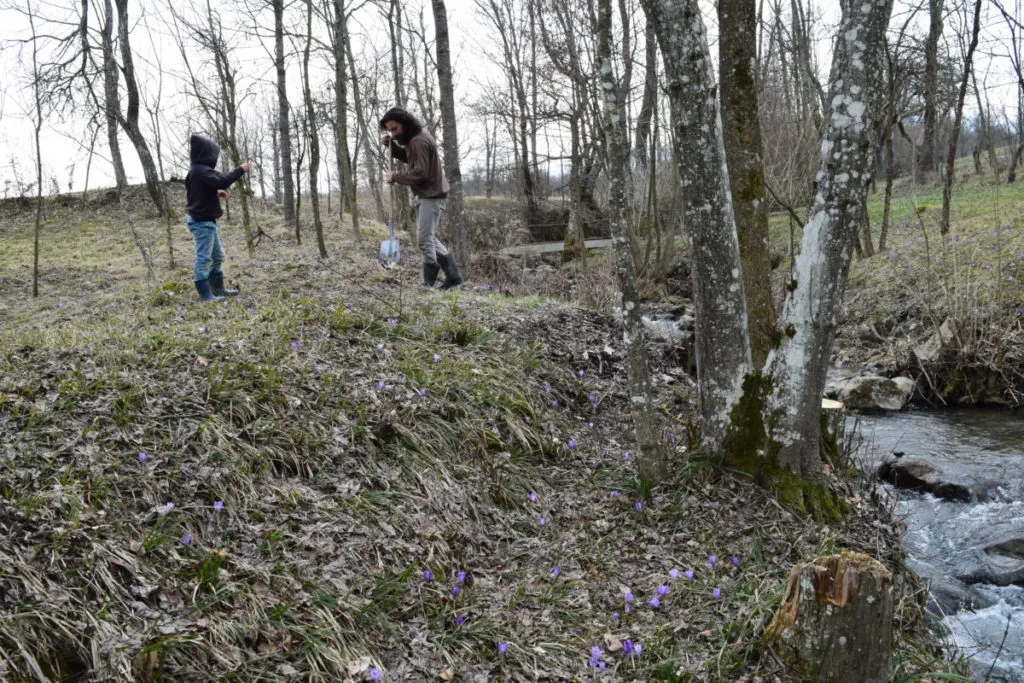
It is worth noting, that however many new trees we plant, it will never quite take our pollution entirely away. While we continue to plant trees, we should also discover ways to reduce air pollution at the same time. That’s the only way to find balance.
6. Erosion control
Can you think of an area that’s been flooded lately?
Does it have many trees nearby? Or is it more of the city-pavement type?
Not to blame and shame here, but an urban area without trees (only industrial agriculture and commercial development) is asking for an occasional and random source of water to run all over it. It’s just what water does, it flows. And if it is too much, it is going to flow hard and fast.
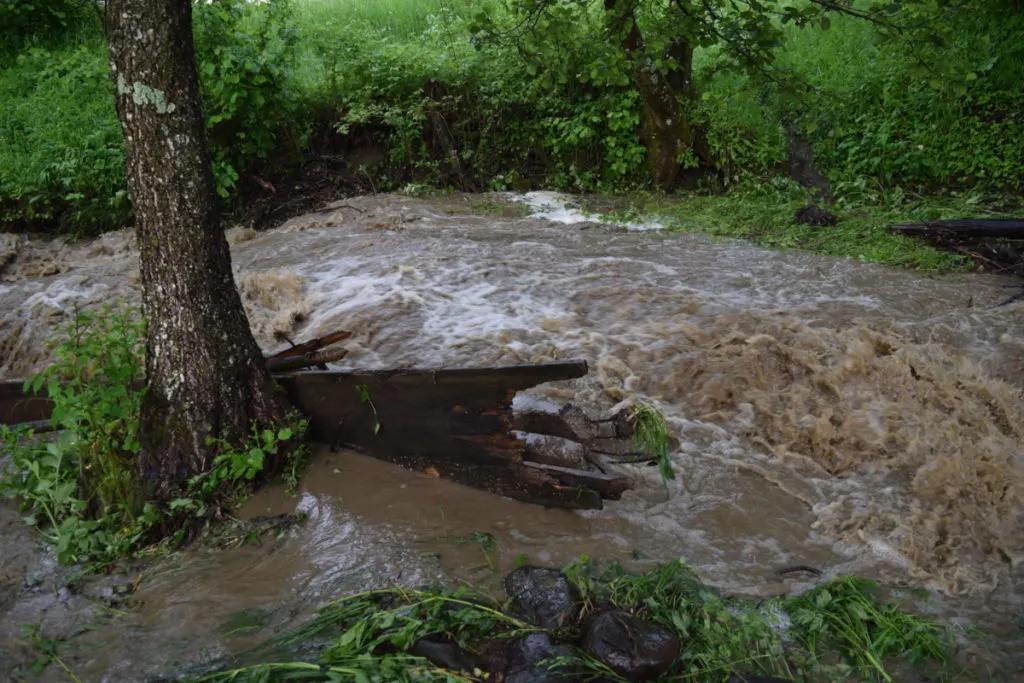
Search for the main cause of soil erosion and you’ll end up with a few answers:
- water
- wind
- gravity
- ice
- deforestation
- construction
Modern farming also causes erosion by the removal of the most fertile top layer of soil from tilling. As we are finding out, the consequences can be deadly.
If trees could help us slow soil erosion, would we not be interested?
Sure we would.
Trees prevent erosion by protecting soil from heavy winds and rain, they prevent surface runoff and reverse nutrient depletion. Sounds like a good deal to me.
If you knew that humans were causing 10 times more erosion than natural processes combined, would you be more likely to want to plant a tree?
7. Trees and Carbon Dioxide
I’ve read before that “trees fight global warming”. Sounds a little misleading, right?
Trees aren’t exactly warriors. In fact, I like to imagine them more as peacemakers and protectors. We nurture them, they care for us.
If only life were so simple.
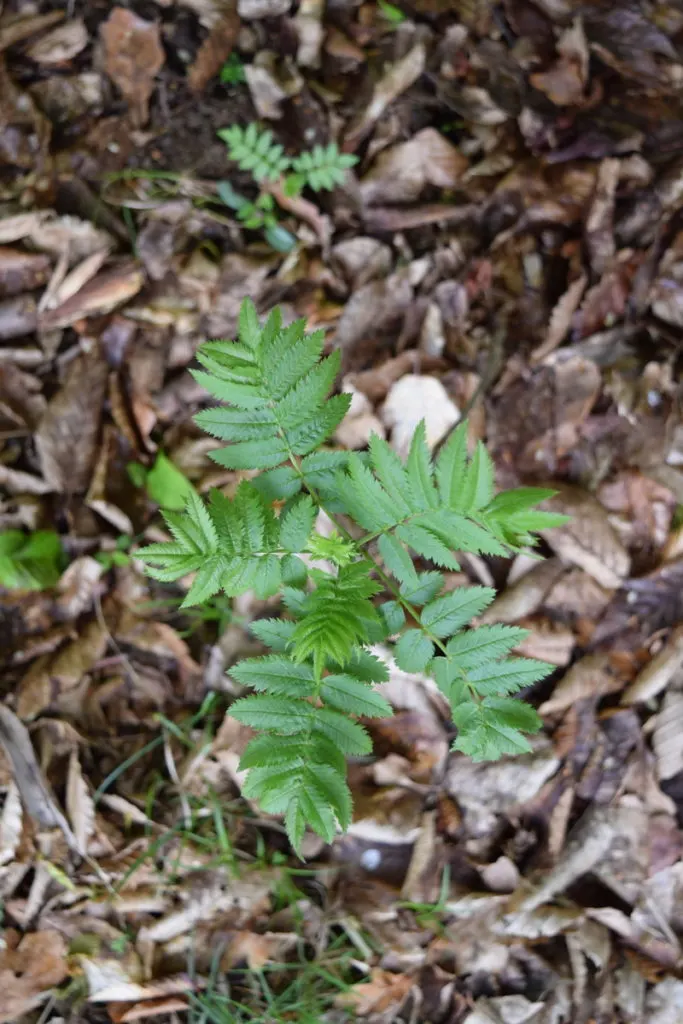
What trees do for us is remove carbon dioxide from the air through photosynthesis.
Whether or not they can keep up with the carbon we are continuously producing, only time can tell.
We may not be able to do it all, but we can all do something.
In the meantime, it is wise advice to plant more trees as we limit our consumer needs. Grow your own food, become evermore self-reliant, aim for zero-waste and learn to compost rather than throw food away.
8. Trees for Education, Recreation and Honor
Do you know the best way to get kids interested in trees?
Introduce them while they are young. Take them to arboretums, to state and national parks, let them go to summer camp. Whatever, wherever, whenever, just make sure they make contact with trees.
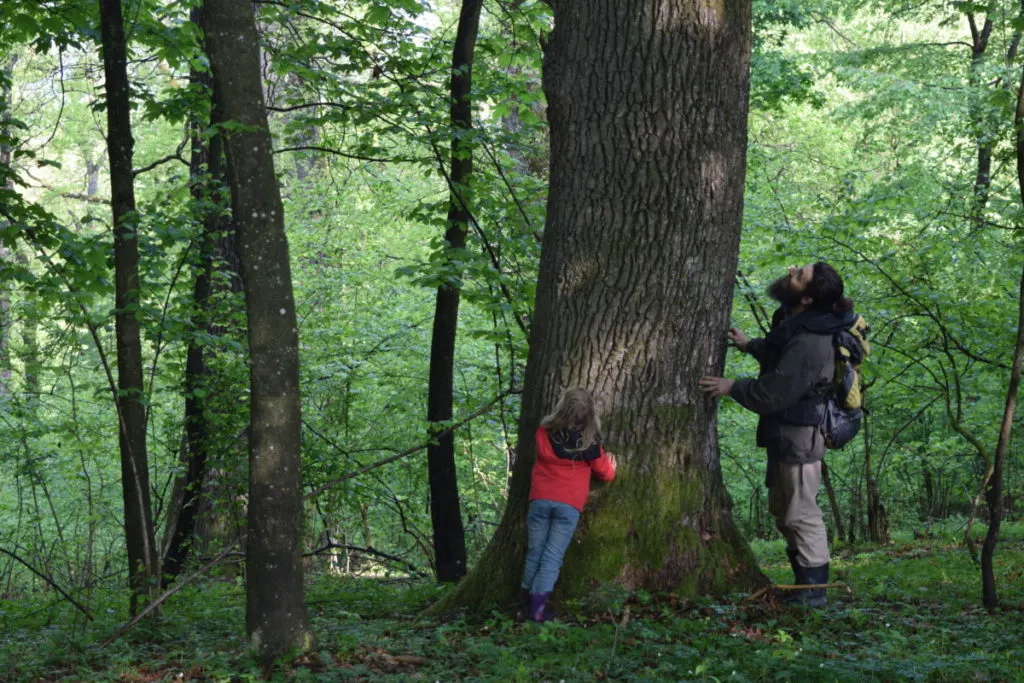
There have been some notable ones in my life. Our magnolia tree in the backyard that my sisters and I climbed nearly every day in summer, each of us having a favorite branch and way to the top. In winter, the yews would be covered with a blanket of snow so deep, that we could sit underneath and pretend we were in an igloo.
Later on, we were caretakers of several large white oaks, some more than 300 years old.
Teach your children, and yourself, about the trees.
Learn to recognize trees first by their leaves, then by their bark and buds. Soon enough you’ll be able to discern their type from far away, based on their branching structure, height and habit.
Trees can also be used to commemorate an event, such as a birth or a marriage. You can also plant a tree, just to say thanks to the earth.
Related reading: 15 Earth Day Activities To Help Make A Difference
9. Trees Make Cities More Enjoyable
Cities, or urban jungles, are full of concrete, sun-reflecting windows and man-made things of all materials, shapes and sizes. Can you feel the country bias here? I’ve spent enough time in both environments to know that my heart is where life is green.
Again, trees reduce the heat of summer by several degrees. When you have multiple days in a row over a hundred, the shade is where it’s at.
Going to green spaces with exposure to trees also has a mental health perspective that one can’t rule out. Trees simply make us happier, and in turn, healthier.
Trees also encourage us to get outside more. This applies to those living in suburbs, towns, villages and the countryside alike. Look out at all that green, smile and take it all in.
Feels great, doesn’t it?
10. Trees Increase Property Value
Money was bound to come up at some point, it always does.
But, this time, it’s in your favor. Particularly if you have some land with a house to sell. It’s noted that trees can increase the property value from 7-18% if there are healthy, mature trees on the plot.
This is something you should be thinking about now. Don’t leave it for later.
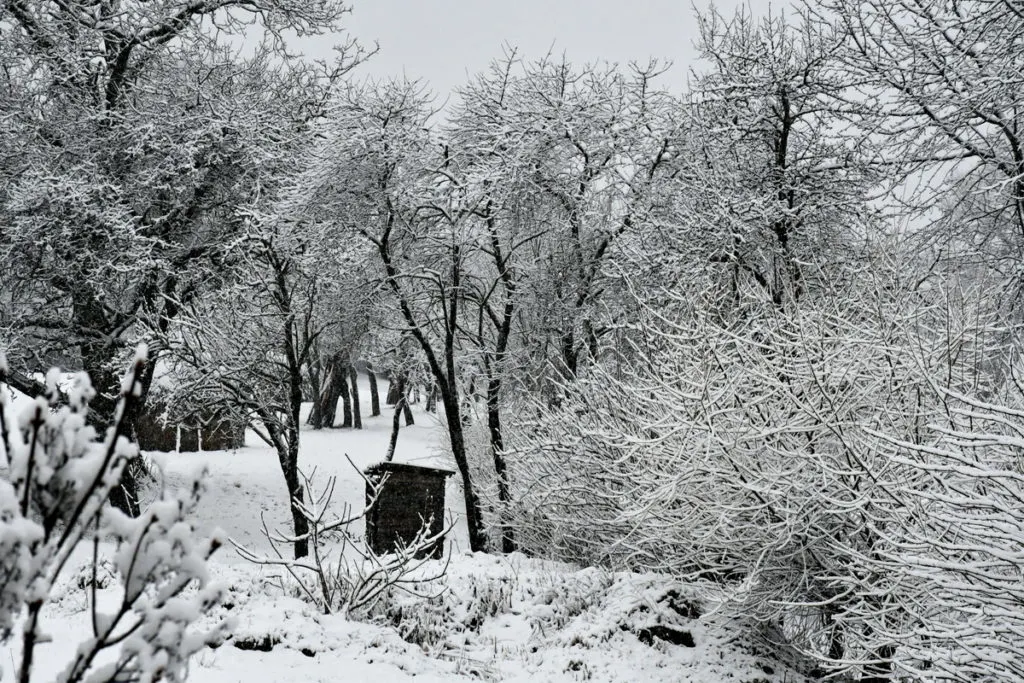
Check out some plants at your local nursery, hire a landscape architect or designer or read some books/articles to get started. Trees can be ornamental, fruiting or nutting. Do your best to decipher what tree will grow best where.
Spring is the best time to plant trees, followed by planting in autumn.
Trees also make your backyard beautiful. If you plan to spend more time at home, it’s worth investing in your joyous free time too.
11. Each Tree Planted is an Investment in the Future
When it’s all said and done, every tree counts.
It doesn’t matter how much carbon they sequester, how large they grow or how long they live.
Some trees will fall down in storms, others may be damaged by insects, and more will go on to live healthy lives, likely outgrowing us by several decades.
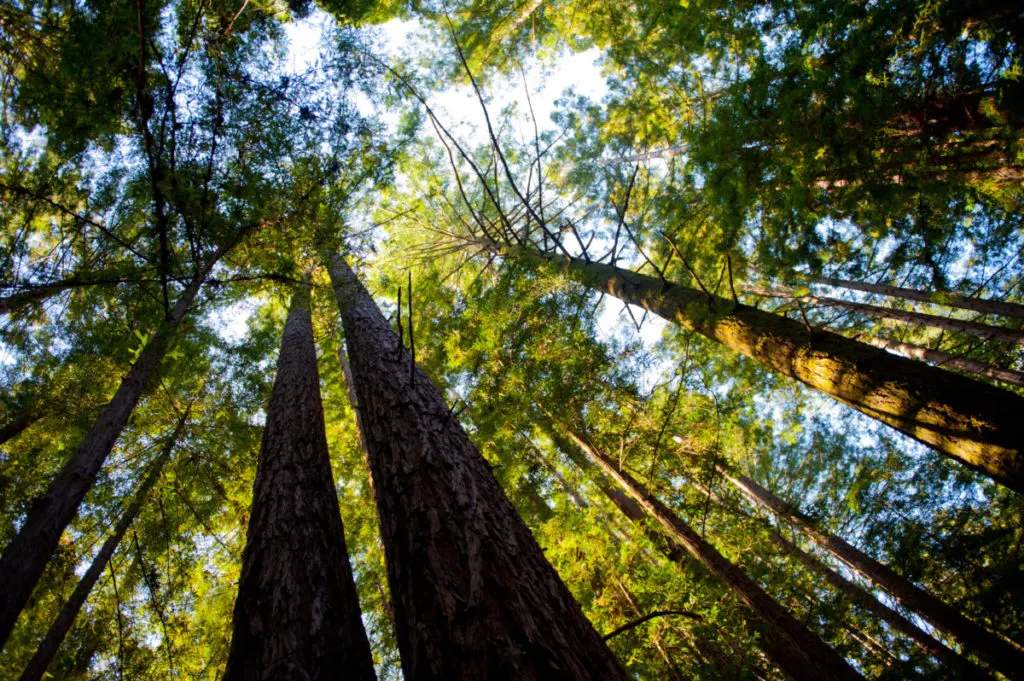
Every tree planted is a gift for our local environment and the world as a whole.
If every person on the planet planted a tree…
There would be several billion more trees than there are now.
If you think that sounds like a lot, consider there are already more than 3 trillion trees in the world.
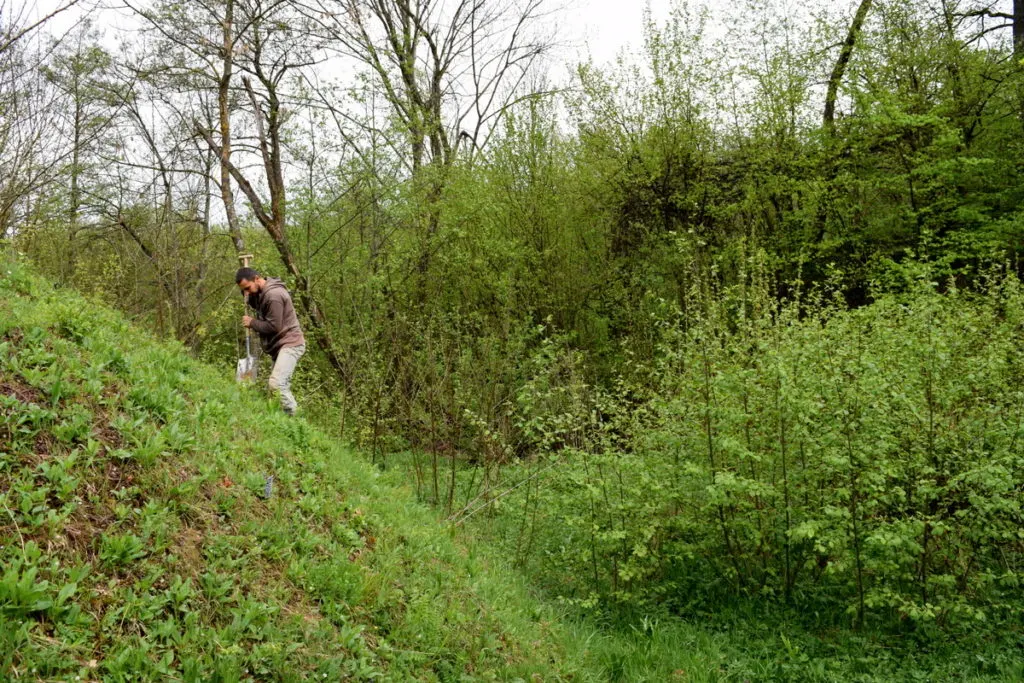
So, perhaps we should each be planting more than one tree in our lifetime.
Maybe even one a year, at a minimum. But what if you don’t have space to make that happen?
How can I plant more trees if I don’t own land?
If you don’t have a backyard or access to land, you can still plant trees. Or rather, pay someone else to plant trees for you to offset your carbon footprint.
Several organizations plant trees around the world:
- One Tree Planted
- The Nature Conservancy
- Trees for the Future
- Carbon Fund
- 8 Billion Trees
- International Tree Foundation
- Ecosia
Be an activist, be activated or just get active.
Now it’s time to get outdoors and thank the trees for all they do for us.
Better yet, plant a tree each and every year. This way, the future is cared for too.

Get the famous Rural Sprout newsletter delivered to your inbox.
Including Sunday ramblings from our editor, Tracey, as well as “What’s Up Wednesday” our roundup of what’s in season and new article updates and alerts.

